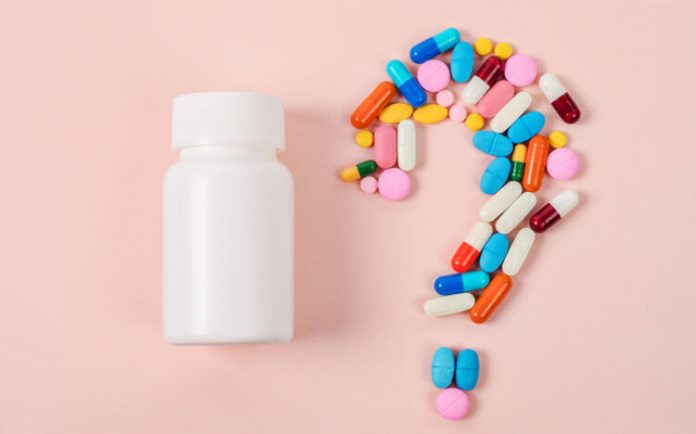Antibiotics are medications used to fight infections caused by bacteria. They’re also called antibacterials. They treat infections by killing or decreasing the growth of bacteria.
The first modern-day antibiotic was used in 1936. Before antibiotics, 30 of all deaths in the United States were caused by bacterial infections. Thanks to antibiotics, previously fatal infections are curable.
Today, antibiotics are still powerful, lifesaving medications for people with certain serious infections. They can also prevent less serious infections from becoming serious.
There are many classes of antibiotics. Certain types of antibiotics work best for specific types of bacterial infections.
Antibiotics come in many forms, including:
tablets
capsules
liquids
creams
ointments
Most antibiotics are only available with a prescription from your doctor. Some antibiotic creams and ointments are available over the counter.
How do antibiotics work against bacteria?
Antibiotics bacterial infections either by killing bacteria or slowing and suspending its growth. They do this by:
attacking the wall or coating surrounding bacteria
interfering with bacteria reproduction
blocking protein production in bacteria
How long do antibiotics take to work?
Antibiotics begin to work right after you start taking them. However, you might not feel better for 2 to 3 days.
How quickly you get better after antibiotic treatment varies. It also depends on the type of infection you’re treating.
Most antibiotics should be taken for 7 to 14 days In some cases, shorter treatments work just as well. Your doctor will decide the best length of treatment and correct antibiotic type for you.
Even though you might feel better after a few days of treatment, it’s best to finish the entire antibiotic regimen in order to fully resolve your infection. This can also help prevent antibiotic resistance. Don’t stop your antibiotic regimen early unless your healthcare professional says you can do so.
What are antibiotics made of?
The first beta-lactam antibiotic, penicillin, was discovered by accident. It was growing from a blob of mold on a petri dish. Scientists found that a certain type of fungus naturally produced penicillin. Eventually, penicillin was produced in large amounts in a laboratory through fermentation using the fungus.
Some other early antibiotics were produced by bacteria found in ground soil.
Today, all antibiotic medications are produced in a lab. Some are made through a series of chemical reactions that produce the substance used in the medication.
Other antibiotics are at least partly made through a natural but controlled process. This process is often enhanced with certain chemical reactions that can alter the original substance to create a different medication.
What is antibiotic resistance?
Antibiotics are powerful medications that work very well for certain types of illnesses. However, some antibiotics are now less useful than they once were due to an increase in antibiotic resistance.
Antibiotic resistance occurs when bacteria can no longer be controlled or killed by certain antibiotics. In some cases, this can mean there are no effective treatments for certain conditions.
Each year, there are more than 2.8 cases of bacterial infections that are resistant to antibiotics, resulting in at least 35,000 deaths.
When you take an antibiotic, the sensitive bacteria are eliminated. The bacteria that survive during antibiotic treatment are often resistant to that antibiotic. These bacteria typically have unique characteristics that prevent antibiotics from working on them.
Some serious antibiotic-resistant infections include:
Clostridioides difficile difficile (C. diff)
The overgrowth of this type of bacteria causes infection in both your small and large intestines. This often occurs after someone’s treated with antibiotics for a different bacterial infection. C. diff is naturally resistant to many antibiotics.
Vancomycin-resistant enterococcus (VRE)
These bacteria often infect your bloodstream, urinary tract, or surgical wounds. This infection typically occurs in people who are hospitalized. Enterococci infections may be treated with the antibiotic vancomycin, but VRE is resistant to this treatment.
Methicillin-resistant Staphylococcus aureus (MRSA)
This type of infection is resistant to traditional staph infection antibiotics. MRSA infections typically occur on your skin. It’s most common in people in hospitals and those with weakened immune systems.
Carbapenem-resistant Enterobacteriaceae (CRE)
This class of bacteria are resistant to a lot of other antibiotics. CRE infections typically occur in people in hospitals and who are on a mechanical ventilator or have indwelling catheters.
The most important cause of antibiotic resistance is inappropriate use or overuse of antibiotics. As much as 28 percent of antibiotic use is thought to be unnecessary. This is because antibiotics are often prescribed when they aren’t needed.
Several important steps can be taken to decrease inappropriate antibiotic use:
Take antibiotics only for bacterial infections. Don’t use antibiotics for conditions caused by viruses such as the common cold, flu, cough, or sore throat.
Take antibiotics as directed by a healthcare professional. Using the wrong dose, skipping doses, or taking it longer or shorter than directed might contribute to bacteria resistance. Even if you feel better after a few days, talk with your healthcare professional before discontinuing an antibiotic.
Take the right antibiotic. Using the wrong antibiotic for an infection might lead to resistance. Don’t take antibiotics prescribed for someone else. Also, don’t take antibiotics left over from a previous treatment. Your healthcare professional will be able to select the most appropriate antibiotic for your specific type of infection.
What are antibiotics used to treat?
Antibiotics are used for treating infections caused by bacteria. Sometimes it’s difficult to determine if your infection is caused by bacteria or a virus because the symptoms are often very similar.
Your healthcare professional will evaluate your symptoms and conduct a physical exam to determine the cause of your infection. In some cases, they may request a blood or urine test to confirm the cause of infection.
Some common bacterial infections include:
urinary tract infections (UTIs)
sinus and ear infections
strep throat
Antibiotics aren’t effective against viruses, such as the common cold or flu. They also don’t work on infections caused by fungi, such as:
yeast infections
athlete’s foot
fungal toenail infections
ringworm
These are treated with a different group of medications called antifungals.
What are common side effects of antibiotics?
Most antibiotics have similar side effects. Perhaps the most common side effect is gastrointestinal (GI) upset, including:
diarrhea
nausea
vomiting
cramps
In some cases, these side effects can be reduced if you take the antibiotic with food. However, some antibiotics must be taken on an empty stomach. Ask your doctor or pharmacist about the best way to take your antibiotic.
GI upset usually goes away after you stop treatment. If it doesn’t, you should call your doctor. Also call your doctor if you develop:
severe diarrhea
stomach pain and cramping
blood in your stool
fever
Taking antibiotics effectivelyAntibiotics are most effective when used appropriately. This starts with ensuring that you really need the antibiotic. Only use antibiotics prescribed by your doctor for a bacterial infection.
Talk with your doctor or pharmacist about the best way to take your antibiotic. Some should be taken with food to reduce side effects, but others need to be taken on an empty stomach.
Antibiotics should also be taken in the prescribed amount and for the directed length of treatment. You might feel better within a few days after starting the antibiotic, but you should talk with your healthcare professional before stopping your treatment early.





























